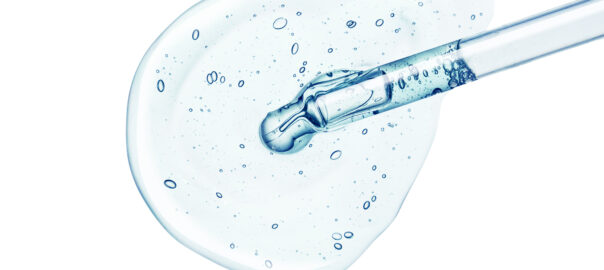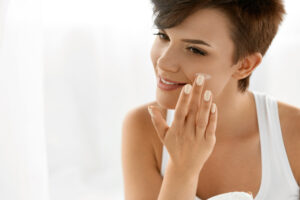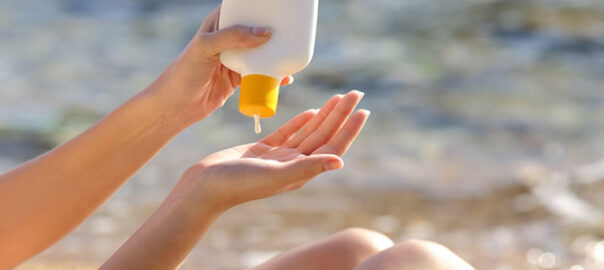In the world of skincare, the search for effective and innovative ingredients is never-ending. One such ingredient that has gained significant attention in recent years is Aurist GHI. This powerful component has revolutionised skincare formulations, providing numerous benefits for the skin. In this blog post, we will delve into everything that you need to know about Aurist GHI, and explore why it has become a go-to ingredient for skincare products.
What is Aurist GHI?
INCI : Cyamopsis Tetragonoloba (Guar) Gum
AURIST GHI is a versatile and natural rheology modifier that offers exceptional sensory characteristics suitable for various applications. This innovative product is derived from the endosperm of the guar bean, a legume cultivated in India and Pakistan. Notably, the guar bean is renowned for its ability to withstand drought conditions, making it an environmentally-friendly choice.
During periods of drought stress, the outer layers of the guar bean’s endosperm experience water loss. However, the galactomannan cell walls, known for their thick nature, create a protective barrier that retains moisture in the inner regions. This unique property suggests that the guar bean’s mannans may also act as a hygroscopic buffer.
AURIST GHI’s distinctive thickening capabilities make it an ideal choice for a wide range of industries. When combined with xanthan gum, it forms strong associations, optimising viscosity and enhancing overall performance. Whether used in personal care, food, or other applications, AURIST GHI serves as a sustainable thickener, meeting the demands of formulations with eco-friendly claims.
 Origin of Aurist GHI
Origin of Aurist GHI
AURIST GHI is a highly versatile thickener derived from the endosperm of the guar bean, a legume that possesses remarkable drought resistance characteristics. The guar bean’s ability to withstand arid conditions is crucial in regions where water scarcity poses a significant agricultural challenge. During periods of drought stress, the guar bean undergoes a fascinating physiological response.
As the drought intensifies, water loss occurs primarily in the outer layers of the guar bean’s endosperm. However, the galactomannan cell walls within the endosperm exhibit a unique structural property. They are thick and dense, acting as a barrier that prevents rapid water evaporation and maintains a relatively higher moisture level in the interior.
One intriguing consequence of this phenomenon is the creation of a microenvironment within the endosperm that remains comparatively moist for a certain period of time. This can be attributed to the hygroscopic nature of the galactomannan polysaccharides, known as mannans, present in the guar bean. Mannans have the ability to absorb and retain moisture, acting as a natural hygroscopic buffer.
The hygroscopic properties of AURIST GHI, derived from the guar bean’s endosperm, make it a truly unique thickener with a wide range of applications in various industries. Its ability to attract and hold moisture is highly valuable, especially in food and cosmetic formulations where maintaining moisture levels is critical for product stability and quality.
The effectiveness of AURIST GHI as a thickener lies in its capacity to absorb and retain water molecules. When incorporated into a product, it helps to enhance viscosity, improve texture, and stabilize emulsions. Furthermore, the hygroscopic nature of AURIST GHI allows it to act as a moisture regulator, preventing moisture loss or absorption from the surrounding environment. This characteristic makes it particularly useful in formulations where moisture control is essential, such as in personal care products, pharmaceuticals, and food applications.
Overall, the unique thickening properties of AURIST GHI, derived from the hygroscopic galactomannan cell walls of the guar bean, contribute to its widespread use across various industries. Its ability to serve as a hygroscopic buffer sets it apart from other conventional thickeners and establishes it as a valuable ingredient that helps maintain product integrity and performance in challenging conditions.
What are the typical characteristics of Aurist GHI?
- Appearance: Aurist GHI is a fine powder with a color that can range from off-white to yellow. The powder has a smooth texture and is composed of small particles that are easily dispersible.
- Viscosity: At a temperature of 25°C and a concentration of 1% in demineralized water, the viscosity of Aurist GHI is measured to be between 3000 and 4500 mPa*sec. This indicates that Aurist GHI has a moderate to high viscosity, meaning it has a relatively thick consistency and exhibits resistance to flow. The measurement is determined using a Brookfield RVT viscometer with a spindle speed of 20 rpm and Spindle 3.
- Moisture: Aurist GHI contains a moisture content ranging from 4% to 15%. The moisture content refers to the amount of water present in the powder. This range indicates that Aurist GHI can contain a moderate level of moisture, which may affect its stability and shelf life. It is important to store and handle the powder in a controlled environment to prevent excessive moisture absorption or loss.
- Bulk density: The bulk density of Aurist GHI is approximately 0.7 g/ml. Bulk density refers to the mass of a substance per unit volume when it is in a loose, powdered form. This measurement indicates that Aurist GHI is relatively light and can occupy a larger volume due to its low density. It should be noted that bulk density can vary depending on factors such as compaction, particle size, and handling methods.
- pH: When Aurist GHI is dissolved in a 1% solution, the resulting pH falls within the range of 5.5 to 7.0. This indicates that the solution formed by Aurist GHI is slightly acidic to neutral. The pH range suggests that Aurist GHI is compatible with a wide range of pH environments and can be used in formulations with different acidity or alkalinity levels.
- Total Viable Count: The maximum allowable total viable count in Aurist GHI is 100 colony-forming units (CFU) per gram. This measurement refers to the number of viable microorganisms, such as bacteria, that can be present in a given sample. The specified maximum count of 100 CFU/g indicates that Aurist GHI has undergone microbial testing to ensure its quality and safety. The low count signifies that Aurist GHI has a minimal level of microbial contamination, making it suitable for various applications where microbiological control is important.
These characteristics provide valuable information about the physical, chemical, and microbial properties of Aurist GHI, enabling users to understand its behaviour, handle it appropriately, and assess its suitability for specific applications.
What are the benefits of Aurist GHI?
- Formulation at low pH: Aurist GHI is a versatile ingredient that offers a significant benefit in skincare formulations by being applicable for use in a wide range of pH levels, including low pH environments. This characteristic makes it particularly valuable in skincare leave-on formulas that contain acids such as Alpha Hydroxy Acids (AHA) serums.
- Improved sensory: When Aurist GHI is combined with xanthan gum in skin care formulations, it further amplifies the sensory benefits. Xanthan gum is a natural ingredient commonly used as a thickening agent and stabilizer in cosmetic products. It helps improve the texture, consistency, and overall performance of the formulation.By combining Aurist GHI with xanthan gum, the resulting blend provides a synergistic effect. The low coefficient of friction from Aurist GHI and the thickening properties of xanthan gum create a formulation that not only feels smooth and luxurious on the skin but also improves the spreadability and ease of application. This can be particularly advantageous for leave-on products, such as moisturizers or serums, where the texture and sensory experience play a significant role.
- Formulation with cationic components: Aurist GHI is a neutral charged gum, which means it lacks any positive or negative charge on its surface. This unique characteristic makes it highly advantageous in formulations that involve cationic components.Moreover, Aurist GHI is particularly well-suited for use in hair conditioner formulations. Hair conditioners often include cationic surfactants or conditioning agents that have an affinity for negatively charged hair strands. The neutral charge of Aurist GHI allows it to seamlessly blend with cationic conditioning agents, ensuring that they can effectively bind to the hair surface and provide the desired conditioning and moisturizing effects. Additionally, the neutral charge of Aurist GHI helps maintain the stability and consistency of the hair conditioner formulation.
- Cold process rinse off: The benefit of Aurist GHI’s cold water solubility lies in its suitability for creating translucent conditioners through a cold mixing process. This feature offers advantages such as energy efficiency, process efficiency, visually appealing products, customization options, enhanced consumer experience, and marketing benefits.
Shelf life of Aurist GHI
Let’s break it down in detail the expected shelf life of Aurist GHI when stored under specific conditions:
- Goods in the original packages: This refers to the Aurist GHI products that are still sealed in their original packaging. It implies that once the packaging is opened, the shelf life may be affected.
- Temperature below 25°C: The recommended storage temperature for Aurist GHI is below 25 degrees Celsius. This means that the product should be stored in a cool environment, avoiding exposure to high temperatures that could potentially degrade the product.
- Relative humidity less than 65%: The specified relative humidity level indicates that the product should be stored in an environment with relatively low moisture content. High humidity can lead to moisture absorption, which may affect the stability and quality of the product.
- Retain stability for at least 12 months: The statement suggests that if the Aurist GHI products are stored in their original packaging at temperatures below 25°C and relative humidity below 65%, they are expected to remain stable and maintain their desired properties for a minimum of 12 months. This means that the product should remain effective, safe, and meet the quality standards during this period.
Disclaimer: It’s important to note that the provided information is specific to the Aurist GHI product and may not apply universally to other products or medications. Always refer to the product’s packaging or consult the manufacturer’s instructions for accurate storage guidelines and shelf life information.
Storage conditions for Aurist GHI
Aurist GHI is a product that is acceptably stable to air and heat, which means it can withstand certain levels of exposure to air and heat without significant degradation. However, it is still important to follow proper storage conditions to maintain its quality and effectiveness over time. Here are some detailed guidelines for storing Aurist GHI:
- Temperature: Store Aurist GHI at room temperature, typically between 20°C to 25°C (68°F to 77°F). Avoid exposing it to extreme temperatures, such as direct sunlight, high heat sources, or freezing temperatures. Fluctuations in temperature can affect the stability and potency of the product.
- Air Exposure: While Aurist GHI is relatively stable to air, it is advisable to minimise prolonged exposure to air to prevent any potential oxidation or moisture absorption. Close the container tightly after each use to maintain its integrity. If the product comes in a jar or bottle, ensure the lid is sealed properly to prevent unnecessary air exposure.
- Moisture: Keep Aurist GHI away from excessive moisture or humidity. Moisture can cause the product to deteriorate, affect its consistency, or promote the growth of microorganisms. Avoid storing it in the bathroom or any area prone to high humidity levels.
- Light: Protect Aurist GHI from direct sunlight or prolonged exposure to artificial light sources. Ultraviolet (UV) radiation can degrade the ingredients in the product and reduce its effectiveness. Keep it in a dark or opaque container, or store it in a drawer or cabinet away from light sources.
- Packaging: If the product comes in its original packaging, it is generally recommended to store it in that packaging. The packaging is designed to provide adequate protection and maintain the stability of the product. However, if the original packaging is damaged or compromised, transfer the product to a suitable airtight container that provides proper protection.
- Shelf Life: While Aurist GHI is stable under the recommended storage conditions, it is important to note its shelf life (read above). The product may have an expiration date or a recommended period of use after opening (PAO). Follow the manufacturer’s instructions regarding the shelf life and discard the product if it has passed the expiration date or PAO.
Please note: It is crucial to read and follow the specific storage instructions provided by the manufacturer or consult the product packaging for any additional recommendations or precautions. Proper storage conditions will help maintain the quality, efficacy, and longevity of Aurist GHI.
Suggested applications of Aurist GHI
Aurist GHI is a versatile ingredient with various applications in the categories of skin care, hair care, leave-on products, and rinse-off products.
Skin Care: Moisturizers, serums, creams, lotions, and anti-aging products.
Hair Care: Conditioners and hair masks.
Leave-On Products: Facial masks, sunscreens, and body lotions.
Rinse-Off Products: Cleansers, shampoos, and body washes.
The recommended use level of Aurist GHI ranges from 0.2% to 1%. It is important to note that the pH range of use for Aurist GHI is between 3 and 10, meaning it can be incorporated into formulations within this pH range for optimal effectiveness.
Please note: It is always advisable to consult the specific guidelines provided by the manufacturer (United Descaler) of Aurist GHI and conduct appropriate compatibility and stability tests when formulating products.
What are the compatibilties of Aurist GHI?
Aurist GHI is compatible with various water-soluble ingredients, such as polyols and alcohols, water-soluble polymers, surfactants (to be determined on a case-by-case basis), electrolytes, and ethanol up to a maximum of 10% solution. Let’s go into detail about the compatibility of Aurist GHI with each of these components:
Water-Soluble Ingredients (Polyols and Alcohols) are:
- Glycerin: Aurist GHI is compatible with glycerin, which is a commonly used humectant in skincare and cosmetic formulations. Glycerin helps to attract and retain moisture in the skin.
- Propylene glycol: Aurist GHI is compatible with propylene glycol, another widely used humectant with moisturizing properties. It helps to prevent products from drying out and enhances their texture.
- 13BG (Butylene Glycol): Aurist GHI is compatible with 13BG, which is a versatile ingredient that functions as a humectant, solvent, and viscosity enhancer. It improves the texture and spreadability of cosmetic formulations.
- 13PDO (Propanediol): Aurist GHI is compatible with 13PDO, which is a multifunctional ingredient that can act as a humectant, solvent, and antimicrobial agent. It helps to maintain the moisture balance in the skin.
- Pentylene glycol: Aurist GHI is compatible with pentylene glycol, which is a moisturizing and antimicrobial ingredient. It helps to improve the effectiveness and stability of cosmetic formulations.
- Ethoxydiglycol: Aurist GHI is compatible with ethoxydiglycol, a solvent that enhances the solubility of other ingredients in cosmetic formulations. It can also function as a humectant.
Water-Soluble Polymers:
- Carbomers: Aurist GHI is compatible with carbomers, which are high molecular weight polymers used as thickening agents in cosmetic formulations. Carbomers help to create gels and improve the consistency and stability of products.
- Acrylates/Alkylacrylate Crosspolymer: Aurist GHI is compatible with this type of crosslinked polymer, which is commonly used as a thickening agent and stabilizer in cosmetic formulations.
- Polyacrylamide: Aurist GHI is compatible with polyacrylamide, a polymer used for its thickening and film-forming properties in cosmetic products.
- Sodium Acrylate/Sodium Acryloyldimethyl Taurate Copolymer: Aurist GHI is compatible with this copolymer, which is used as a stabilizer, emulsion enhancer, and thickening agent in cosmetic formulations.
- Ammonium Acryloyldimethyltaurate/VP Copolymer: Aurist GHI is compatible with this copolymer, which functions as a thickening agent, emulsion stabilizer, and film-forming agent in cosmetic products.
- Sodium Polyacrylate: Aurist GHI is compatible with sodium polyacrylate, a high molecular weight polymer used as a thickener, emulsion stabilizer, and sequestering agent in cosmetic formulations.
- Surfactants: The compatibility of surfactants with Aurist GHI needs to be evaluated on a case-by-case basis. Surfactants can have complex interactions with other ingredients, and compatibility may depend on the specific formulation and desired product attributes. Testing and experimentation may be necessary to determine compatibility.
- Electrolytes: Aurist GHI is stable in the presence of electrolytes. Electrolytes are substances that dissociate into ions in water and can affect the stability and performance of cosmetic formulations. Aurist GHI is formulated to maintain stability even when electrolytes are present in the formulation.
- Ethanol: Aurist GHI can accommodate a maximum of 10% ethanol in solution. Ethanol is a common alcohol used as a solvent, preservative, and penetration enhancer in cosmetic and skincare products. However, it is important to note that exceeding the recommended concentration of ethanol can impact the stability and performance of the formulation.
In short, Aurist GHI exhibits compatibility with water-soluble ingredients such as polyols and alcohols, water-soluble polymers, and electrolytes. The compatibility with surfactants needs to be assessed on a case-by-case basis, while the maximum concentration of ethanol allowed is 10%. It’s important to consider specific formulation requirements, conduct compatibility tests, and ensure that the final product meets the desired stability, performance, and safety criteria.
In a quick glance…
Aurist GHI is a revolutionary skincare ingredient derived from the guar bean. Its unique properties make it an effective thickener and moisturizer in various applications. It can be used in low pH formulations, enhances sensory experience when combined with xanthan gum, and is compatible with cationic components. Aurist GHI also has a long shelf life when stored properly. It is suitable for skincare, hair care, leave-on, and rinse-off products. The ingredient is compatible with water-soluble ingredients and polymers. Its versatility and effectiveness make it a popular choice in the skincare industry.



